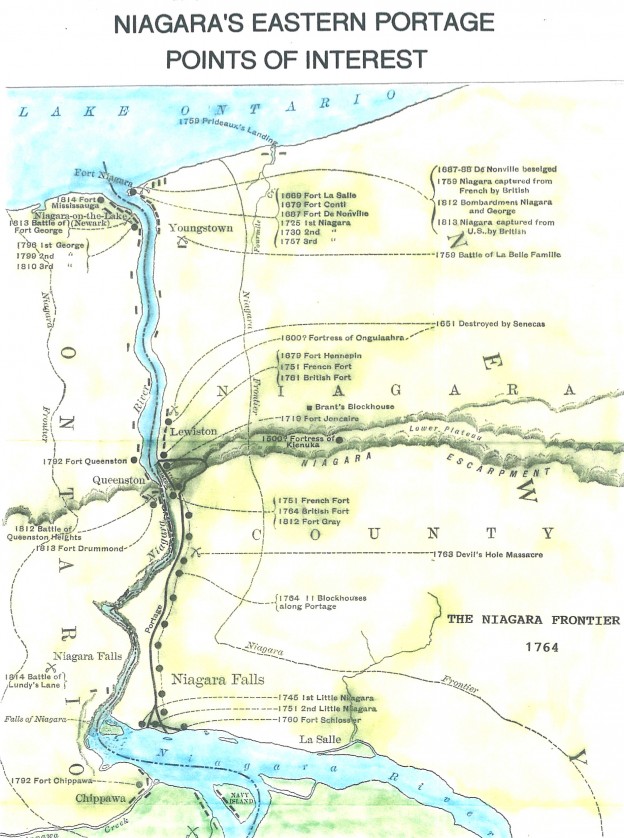A Brief History of
The Niagara Portage
Before 1550
For thousands of years nomadic Native Americans
traveled on the upper and lower Niagara River, portaging around the Gorge and the Falls, as well as the rapids above the Falls.Eventually, the Hopewell people settled along the lower
Niagara river. The Hopewell were then replaced by the Neutrals and then the Eries.The Neutral’s and Erie’s were then conquered by the Seneca’s.
1600 – 1763
The Seneca people controlled the portage and guarded the Western Gate during the first European Contact.
The Tuscaroras settled east of the river early in the 18th century.The French established trading posts and forts along
The east side of the Niagara River both above and
Below the Falls during the first half of the 18th century
The British conquered the French in 1759, during the
French and Indian War.Before the English captured Fort Niagara from the French in 1759, all shipments of furs, munitions and trade goods were packed over the Lewiston escarpment by Indians hired by the French. About 200 Indians from the local Seneca tribe were employed. At the top of the escarpment ran the portage, then an Indian trail.
1763-1800
The English under practical Sir William Johnson built the first portage road in 1763, widening the Native trail into a wagon road.A railway was designed and built by British Captain John Montresor up the face of the cliff, so boats could come up the river to the head of navigation at Lewiston.
Aggression over the control of the portage escalated between the Seneca and the British resulting in The Battle of Devil’s Hole between the Seneca’s and the British.
This battle is believed to have been a part of the larger movement of allied Native American peoples led by Pontiac to push the British out of North America.
1800 -1900
In 1805, the Porter Barton Co. took over control of
The Portage on the American side of the river.QUOTES FROM TRAVELERS
“It is during these three leagues (from above the falls to Lewiston) that goods are carried. There is a very fine road, very Little wood, and almost all prairies mingled with some oaks and Firs, on both banks of the river, which are of a height that inspire fear when you look down.”
Louis Hennepin, 1678
“is called the carrying place of Niagara; it is ever very ill-wooded, and you cannot walk ten paces without treading on ant hills, or meeting with rattlesnakes, especially during the heat of the day.”
Pierre Francois Charlevoix, 1721
“Here on the carrying-place I saw about 200 Indians, most of them belonging to the Six Nations, bring in carrying packs of furs, chiefly deer and bear; you would be surprised to see what abundance of these things are brought everyday over this place. An Indian gets 20 pence for every pack he carries over, the distance being three leagues.” Peter Kalm, 1750
“Mr. Pfister, a German half-pay lieutenant of the Royal Americans, lives at Fort Schlosser. He has made a contract with General Gage, commander-in-chief, to carry all stores, bateaux, belonging to the army, in wagons over land, about 7 miles. Every batteaux, besides those belonging to the army, pays him 10 pounds, N.Y. currency, and upwards, according to their size. Batteaux and all heavy baggage are raised to the top of a high hill on the river, by means of a captain.”
Ralph Izard, 1765
Thank you for your Interest
in the Niagara Portage!This website is currently under construction.
(completion date April 30, 2015)

